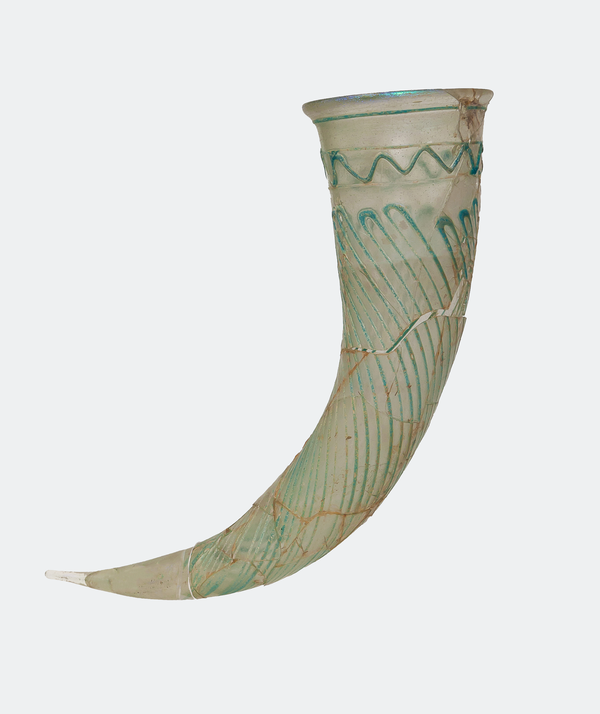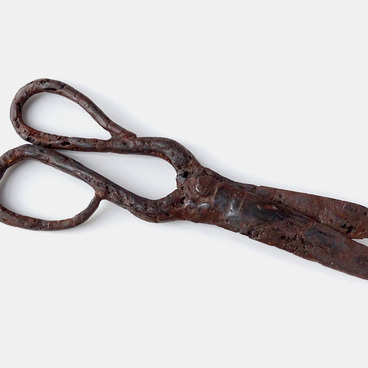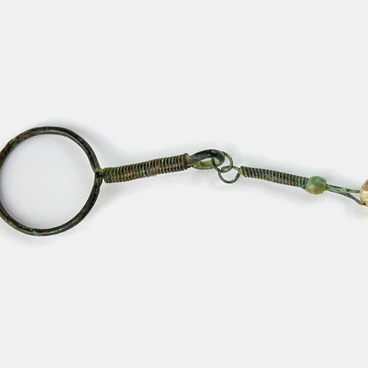A rhyton is a vessel shaped like a horn or a truncated cone, typically with a small opening at the bottom end. The lower end is often shaped like the protome (it is the form of the head and upper torso) of a mythical creature. Moreover, the body is often decorated and could have a handle. The rhytons were mainly made from colored metals, ceramics, horn, bone, or glass. They were intended for drinking, ritual libations and similar uses and have been known since the Bronze Age. Many rhytons are examples of toreutics including those associated with ancient Iranian tradition. Ceramic red and black-figure rhytons with short bodies ending in animal heads were common in ancient Greek art. Glass items of various types and purposes became widespread in the ancient areas of the Northern Black Sea region in the first centuries AD.
Rhyton
Время создания
second half of the 2nd – first half of the 3rd century AD
Размер
32x14x6 cm
Техника
glass, blasting
Коллекция
#2
Rhyton
#3
#4
Volgograd Regional Museum of Local Lore
читать дальшескрыть
Rhyton
Время создания
second half of the 2nd – first half of the 3rd century AD
Размер
32x14x6 cm
Техника
glass, blasting
Коллекция
Открыть в приложении
Поделиться



